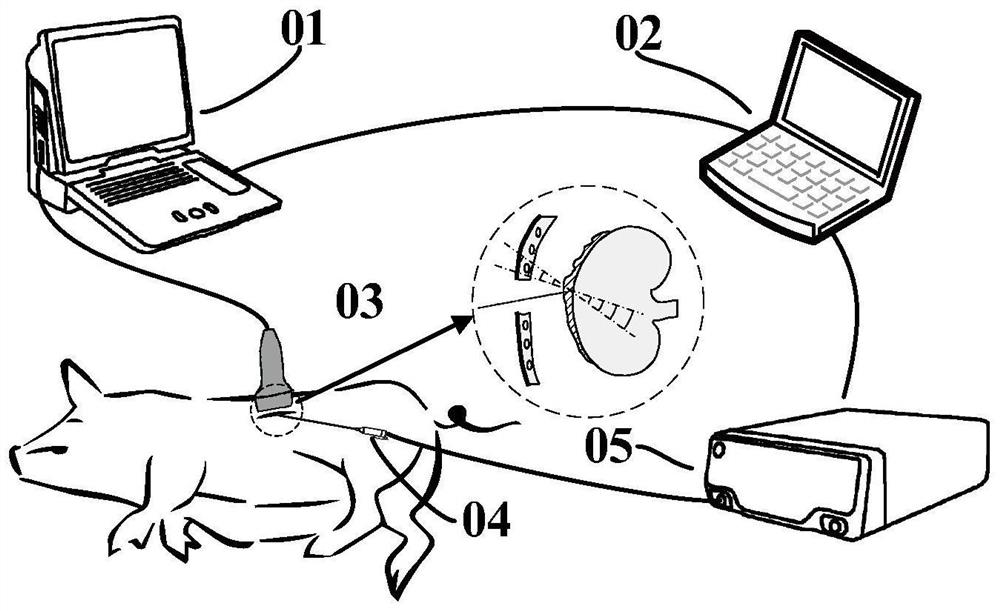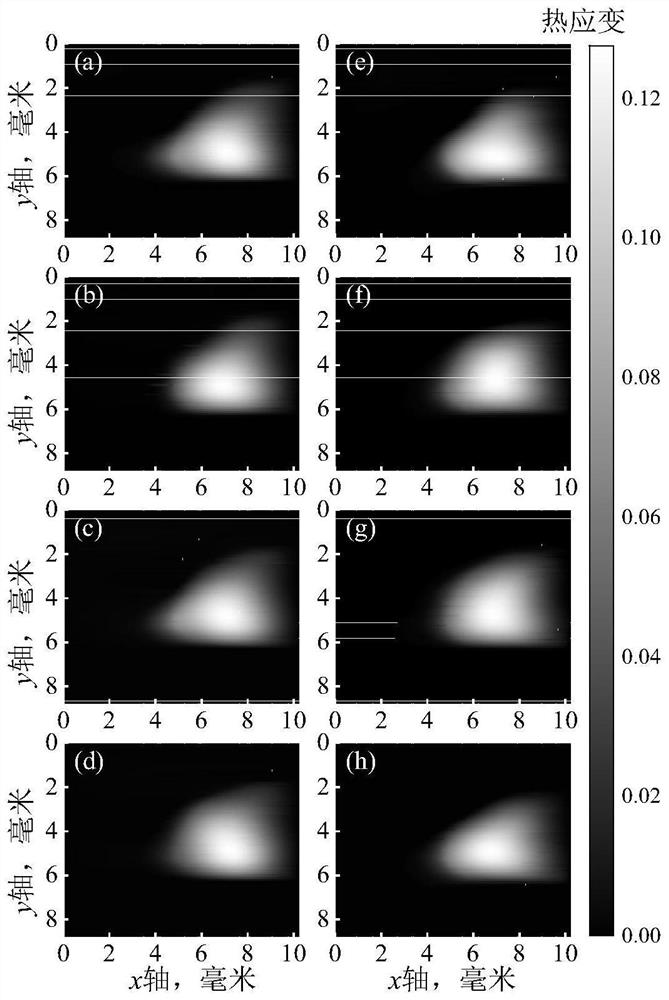Method and device for estimating in-vivo heat source distribution based on ultrasonic imaging
An ultrasonic imaging and internal heat source technology, applied in the field of medical image processing, can solve problems such as heat source estimation error, heat source difficulty, temperature field prediction deviation, etc., and achieve good motion suppression effect and high signal-to-noise ratio
- Summary
- Abstract
- Description
- Claims
- Application Information
AI Technical Summary
Problems solved by technology
Method used
Image
Examples
Embodiment 1
[0058] The schematic flow chart of the method of the embodiment is as figure 1 , a method and device for estimating the distribution of heat sources in the body based on ultrasound imaging of the present invention, comprising the following steps:
[0059] Acquisition steps: use hyperthermia to heat the target area, collect ultrasonic images of the hyperthermia target area in vivo, and obtain digital ultrasonic image sequence I.
[0060] Perform B-ultrasound imaging on the hyperthermia target area in vivo, and collect digital ultrasound image sequences continuously and at equal time intervals; the B-ultrasound instrument works in real-time imaging mode, adjust the angle of the probe and the parameters of the ultrasound system, so that the target area is presented in the imaging field of view; It is worth noting that in the embodiment, different beam control methods, different numbers of array elements, different geometric The imaging probe of the structure, as well as differen...
Embodiment 2
[0097] This example is based on the method of Example 1, using a microwave ablation needle to heat the visceral fat of a living pig, estimating the distribution of heat sources in the biological tissue, and predicting the thermal strain and temperature field in the living body under the same heating scheme. The specific steps of the method as follows:
[0098] Step one, such as figure 2 As shown, in this embodiment, the portable B-ultrasound imaging device 01 with a sampling rate of 40MHz is used with the L12-5 linear array probe 03 with 128 array elements and a center frequency of 10.5MHz to image the visceral fat in the target area of live pigs, continuously, etc. Ultrasonic radio frequency image data are collected at intervals, the imaging depth is set to 4cm, the linear density is set to 128, and the imaging mode is set to fundamental wave mode; thermal ablation equipment is used to heat living objects and form displacement and strain distribution in tissues. In the em...
PUM
| Property | Measurement | Unit |
|---|---|---|
| Density | aaaaa | aaaaa |
Abstract
Description
Claims
Application Information
 Login to View More
Login to View More - R&D
- Intellectual Property
- Life Sciences
- Materials
- Tech Scout
- Unparalleled Data Quality
- Higher Quality Content
- 60% Fewer Hallucinations
Browse by: Latest US Patents, China's latest patents, Technical Efficacy Thesaurus, Application Domain, Technology Topic, Popular Technical Reports.
© 2025 PatSnap. All rights reserved.Legal|Privacy policy|Modern Slavery Act Transparency Statement|Sitemap|About US| Contact US: help@patsnap.com



